| American Civil War |
| Civil war in the United States between the Union and the Confederacy |
| Duration | April 12, 1861 – May 26, 1865 |
| Location | United States, Atlantic Ocean |
| Main Cause | Dispute over the expansion of slavery into the western territories |
| Key Figures | Abraham Lincoln, Jefferson Davis, Robert E. Lee, Ulysses S. Grant |
| Result | Union victory, abolition of slavery, beginning of the Reconstruction era, passage of the Reconstruction Amendments |
| Significant Battles | Battle of Gettysburg, Siege of Vicksburg, March to the Sea, Battle of Appomattox Court House |
| Innovations | Use of railroads, telegraph, steamships, ironclad warships, and mass-produced weapons |
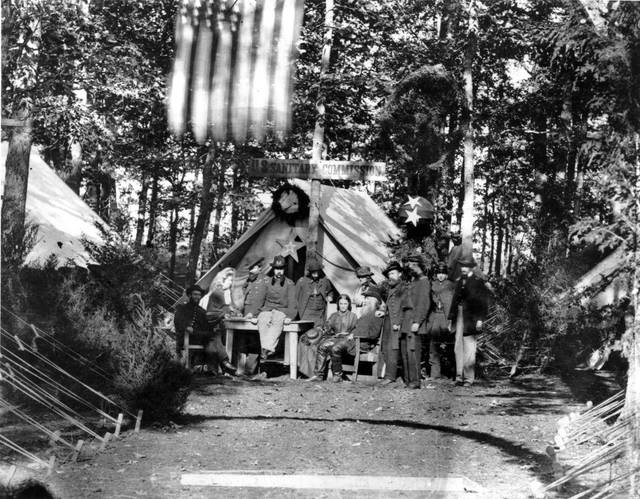
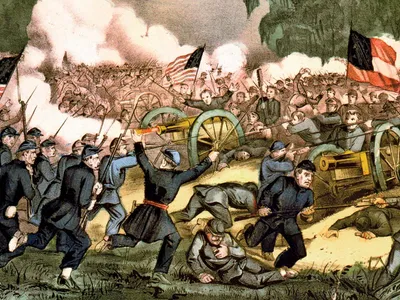
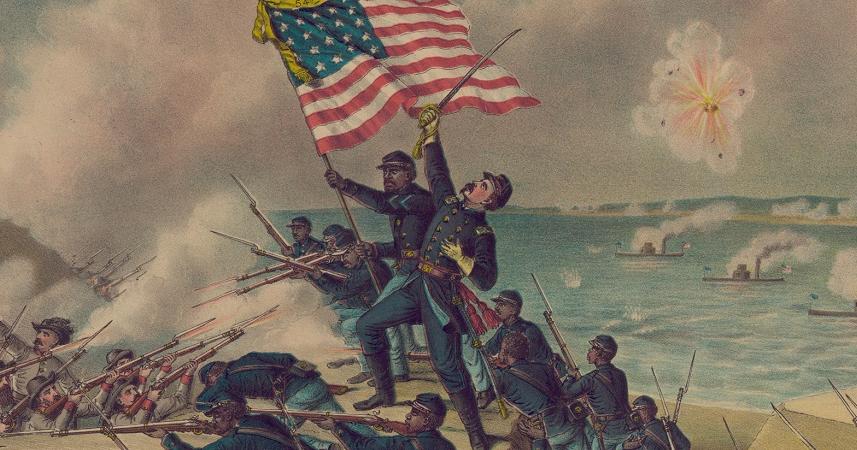
Here are the key details about the American Civil War (1861-1865) based on the provided sources:
Causes:
- The central issue was the expansion of slavery into the western territories, with the North opposing this expansion and the South vehemently supporting it.
- After Abraham Lincoln, who opposed expansion of slavery, won the 1860 presidential election, seven Southern slave states seceded from the Union, forming the Confederate States of America.
- The Confederacy seized federal forts and other properties within their borders, refusing to recognize the Union government.
Beginning of the War:
- The war began on April 12, 1861 when Confederate forces bombarded the Union-held Fort Sumter in Charleston, South Carolina.
- Four more Southern slave states then joined the Confederacy after the war erupted.
- Both sides mustered armies, with the Confederacy led by President Jefferson Davis.
Key Battles/Events:
- Major battles included Bull Run, Shiloh, Antietam, Fredericksburg, Chancellorsville, Gettysburg, Vicksburg, Chickamauga, Atlanta, and the final campaigns in Virginia.
- The Emancipation Proclamation in 1863 made abolition of slavery an explicit Union war goal.
- African Americans enlisted in large numbers for the Union army and navy after 1863.
- General Ulysses S. Grant led the Union armies to victory after being appointed commander in 1864.
Outcome:
- On April 9, 1865, Confederate General Robert E. Lee surrendered to Grant at Appomattox Court House in Virginia after being surrounded.
- Other Confederate armies swiftly surrendered after Lee’s capitulation, ending the war by mid-1865.
- The Confederacy collapsed after over 600,000 Union and 500,000 Confederate soldiers died in the immensely bloody four-year conflict.
- The Union was preserved, slavery was abolished by the 13th Amendment, and the process of Reconstruction began in the defeated South.
The American Civil War was a brutal, defining event in U.S. history that determined the future course of the nation, resolved the issue of slavery, and prevented a permanent dissolution of the United States after the Southern slave states seceded.
Major turning points in the American Civil War
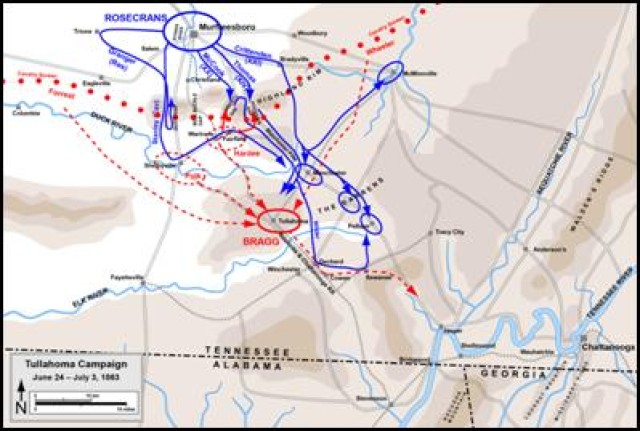
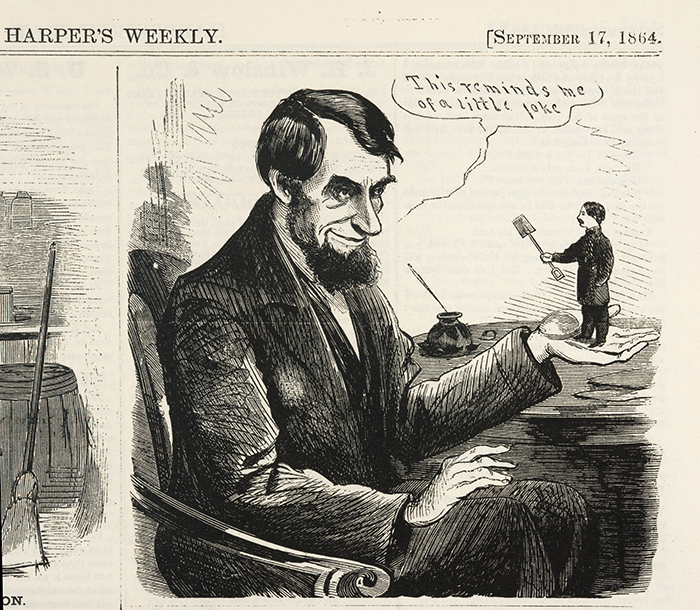
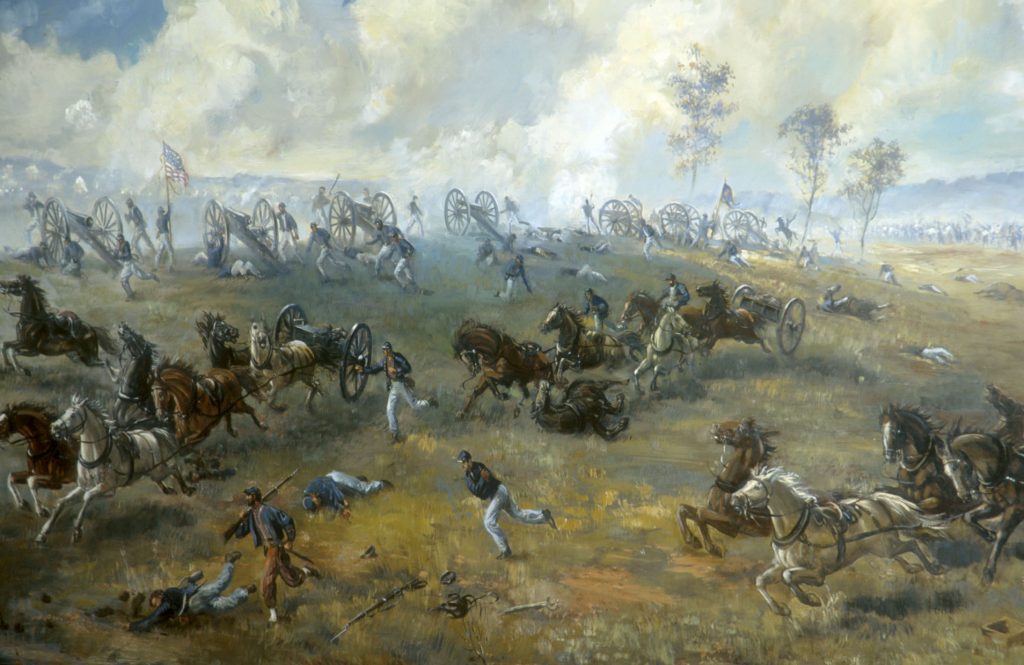
| Turning point of the American Civil War |
| Key event determining the conflict’s outcome |
| Definition | A turning point in the American Civil War is an event after which the eventual outcome was deemed inevitable by most modern scholars. |
| Most Cited Battle | The Battle of Gettysburg in July 1863 is widely regarded as the military climax and primary turning point of the war. |
| Controversy | There is widespread disagreement among historians regarding the precise turning point of the war. |
| Chronology | Several battles and events throughout the war have been proposed as turning points, presented in chronological order in discussions. |
Here are some of the major turning points identified in the American Civil War:
- Battle of Antietam (September 1862)
While a tactical draw, Antietam is considered a turning point because it stopped the Confederate invasion of Maryland, prevented potential British recognition of the Confederacy, and allowed Lincoln to issue the Emancipation Proclamation, making the war explicitly about ending slavery. - Battle of Gettysburg and Fall of Vicksburg (July 1863)
The Union victory at Gettysburg halted the second Confederate invasion of the North, while the capture of Vicksburg gave the Union control of the Mississippi River. These twin victories in early July 1863 are widely seen as the military turning point of the war. - Chattanooga Campaign (November 1863)
General Grant’s decisive victory over the Confederates at Chattanooga opened the way for the Atlanta Campaign and Sherman’s March to the Sea. Some historians like J.F.C. Fuller view this as the key turning point.
- Grant’s Appointment as Union General-in-Chief (March 1864)
Grant’s appointment allowed for a coordinated Union strategy of simultaneous offensives across multiple theaters, putting constant pressure on the Confederacy that it could not withstand. - Atlanta Campaign and March to the Sea (1864)
The capture of Atlanta by Sherman was a major psychological and economic blow to the Confederacy. His subsequent March to the Sea demoralized the Southern population and demonstrated the Confederacy’s inability to stop the Union. - Lincoln’s Re-election (November 1864)
Lincoln’s re-election victory ended the possibility of Union war-weariness and ensured the war would continue until Confederate surrender. Some view this political mandate as a decisive turning point.
While there is no consensus, the sources highlight these military victories, leadership changes, and the 1864 election as key turning points that shifted momentum towards an inevitable Union victory in the Civil War after several years of bloody stalemate.
Key figures and their roles in the American Civil War

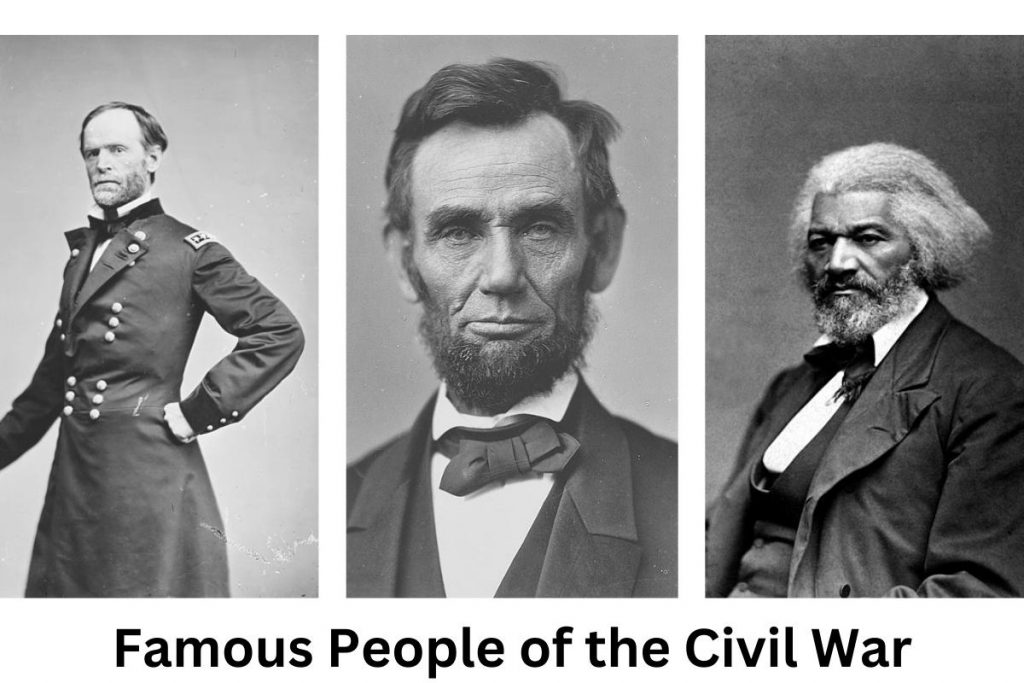
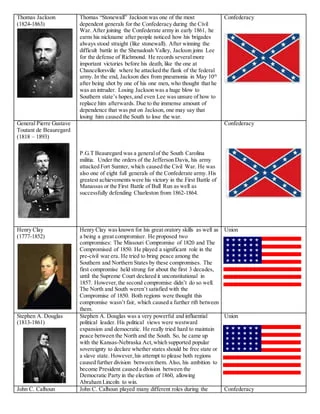
Here are some of the key figures and their roles in the American Civil War:
Union Figures:
- Abraham Lincoln – 16th President of the United States. His election in 1860 prompted the secession of Southern states and he led the Union war effort. He issued the Emancipation Proclamation in 1863, making abolition of slavery an explicit war goal.
- Ulysses S. Grant – The most successful and prominent Union general. As commander of the Union armies from 1864, his relentless campaign led to Confederate surrender in 1865. Later became the 18th U.S. President.
- William T. Sherman – One of Grant’s top generals, known for his “March to the Sea” campaign through Georgia and the Carolinas, devastating the Confederacy’s resources.
- George G. Meade – Union general who decisively defeated Robert E. Lee at the Battle of Gettysburg in 1863, a major turning point.
- Philip Sheridan – Union cavalry general who defeated Confederate forces in the Shenandoah Valley in 1864-65. Later played a role in post-war Reconstruction.
Confederate Figures:
- Jefferson Davis – President of the Confederate States of America, oversaw the Southern war effort but struggled with strategy and creating a new nation.
- Robert E. Lee – The Confederacy’s most famous general, led the Army of Northern Virginia until his surrender to Grant in 1865 at Appomattox.
- Thomas “Stonewall” Jackson – One of Lee’s top generals known for his brilliant tactics until his death in 1863 at Chancellorsville.
Other Notable Figures:
- William Lloyd Garrison – Prominent abolitionist who founded the American Anti-Slavery Society before the war.
- Joshua Chamberlain – Union officer who led the defense of Little Round Top at Gettysburg and received the Confederate surrender at Appomattox.
The sources highlight the critical military and political leadership roles played by figures like Lincoln, Grant, Lee and Davis, as well as the impact of generals like Sherman, Meade and Jackson on major campaigns and battles that shaped the Civil War’s outcome.
Impact of Sherman’s March to the Sea on the Confederacy
Based on the provided sources, Confederacy, both militarily and psychologically, which significantly contributed to its eventual surrender and the Union’s victory in the Civil War. Here are the key impacts highlighted:
Military Impact
- Disruption of Supply Lines
The march successfully disrupted the flow of supplies to Confederate forces battling Union armies, particularly those under General Grant in Virginia. As mentioned in , one of the strategic objectives was “to cut off supply lines for the Confederate army” by destroying railroads, industries and infrastructure across Georgia. - Economic Devastation
Sherman’s scorched earth tactics inflicted immense economic damage on the Confederacy’s manufacturing and agricultural capabilities in Georgia and the Carolinas. Source notes that “Sherman and his men…destroyed hundreds of businesses, homes, farms, railroad lines, and telegraph lines” worth over $100 million in property losses. - Depletion of Resources
The march resulted in the expropriation and destruction of vast quantities of food, livestock and other resources vital for sustaining the Confederate war effort, as detailed in : “over 5,000 horses, 4,000 mules, 13,000 cattle, 10.5 million pounds of corn, and 9.5 million pounds of fodder.”
Psychological Impact
- Demoralization of Civilians
By employing brutally destructive tactics against civilian property and infrastructure, Sherman successfully demoralized and broke the will of the Southern population to continue the war effort, as described in : “Sherman successfully broke the South’s will to fight and the Confederacy’s ability to fight at full capacity.” - Psychological Warfare
The march represented an early example of “total war” and psychological warfare aimed at the Confederate civilian population, as noted in : “Sherman successfully fought a psychological war of destruction. He entered the Confederate psyche and remains in some minds to the present day.”
While the loss of life was relatively low compared to major battles, the economic devastation, disruption of logistics, and lasting psychological impact of Sherman’s scorched earth campaign through Georgia and the Carolinas were crucial factors that undermined the Confederacy’s ability to continue the war, hastening its ultimate surrender in 1865 after years of bloody stalemate.
Some of the Horrors of the Civil War
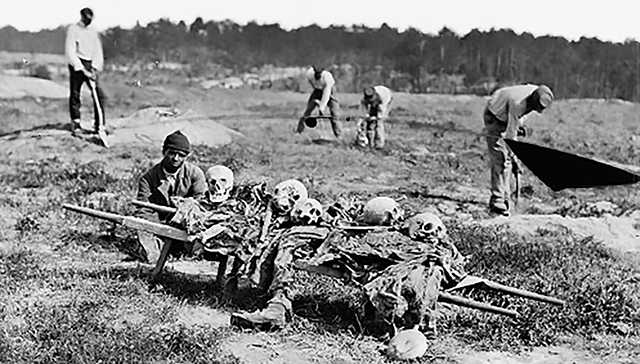
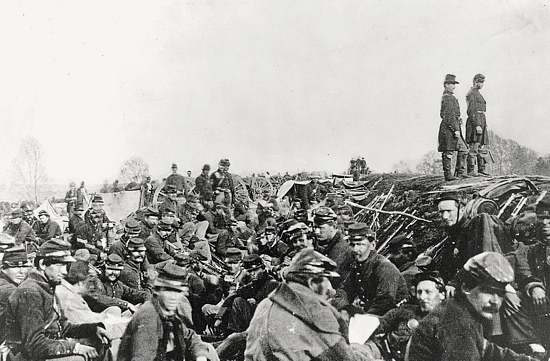
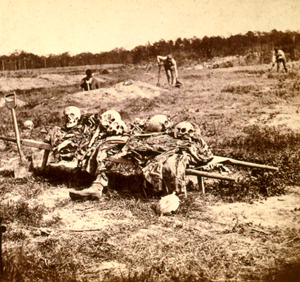
The American Civil War was marked by immense suffering and horrors that were unprecedented in U.S. history up to that point. Based on the provided sources, here are some of the horrific realities soldiers and civilians faced during the conflict:
Medical Horrors:
- Primitive and brutal medical treatments like amputations without anesthesia, use of toxic mercury compounds, bloodletting, etc. were still common practices.
- An estimated 50,000 amputations were performed during the war, often with crude saws in unsanitary conditions leading to infections.
- Diseases like dysentery, typhoid, pneumonia were deadlier than combat itself, killing 2 out of 3 soldiers who perished. Poor sanitation in camps enabled their spread.
Battlefield Carnage:
- The new rifled muskets and artillery caused horrific wounds by shattering bones and ripping off limbs. Soft lead bullets flattened on impact, causing agonizing internal injuries.
- After major battles like Antietam, thousands of wounded soldiers went days without treatment, lying in agony among corpses and being preyed on by wildlife.
- Graphic photographs from Gettysburg captured the brutality, showing soldiers killed in gruesome ways like being torn apart by artillery shells.
Psychological Trauma:
- The sheer scale of death was staggering, with over 600,000 soldiers killed – more than all other U.S. wars combined at the time.
- Soldiers endured unimaginable psychological trauma from the relentless violence, suffering from what we now know as PTSD.
- Amputees faced the horror of “phantom limb” syndrome, feeling persistent pain from limbs that were no longer there.
Civilian Suffering:
- Civilians caught in the path of campaigns like Sherman’s March endured having their homes, farms and businesses destroyed in scorched earth tactics.
- Women and children faced starvation, sexual violence, and being made homeless refugees by the total war waged across the South.
The Civil War exposed Americans to violence, death, and suffering on an unprecedented scale through new industrial weaponry and total war tactics. Its horrors traumatized an entire generation.
Daily life of soldiers in the Civil War
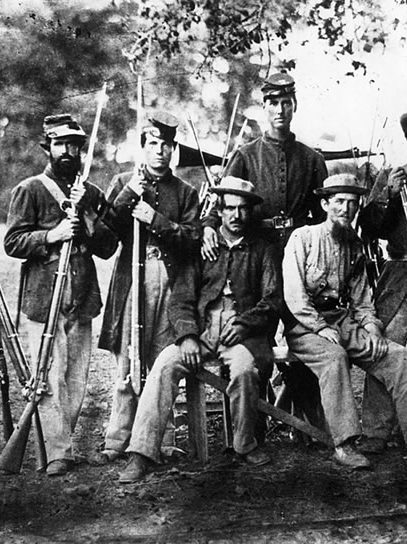
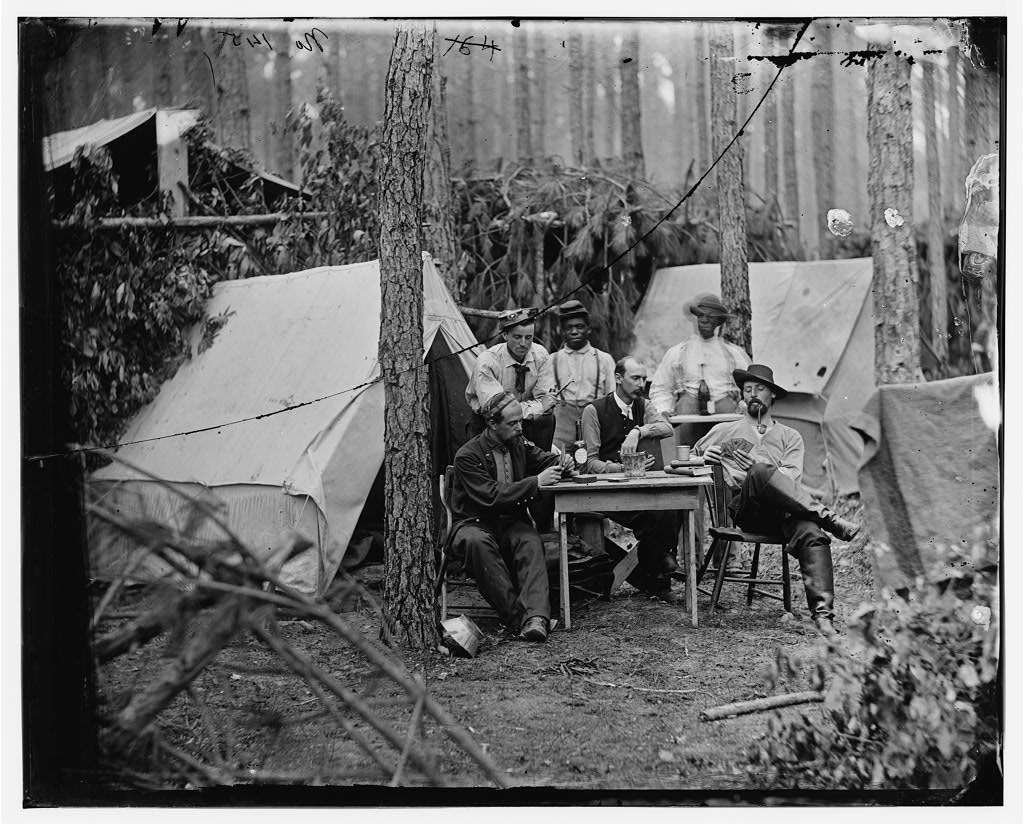
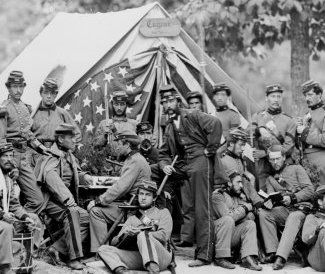
Here are the key details about the daily life of soldiers during the American Civil War:
Routine and Monotony
- A typical day began around 6am and involved drill, marching, lunch break, more drilling, policing the camp, weapon inspection/cleaning, dinner, and taps around 9-9:30pm.
- The daily routine was one of relative monotony, punctuated by brief periods of intense horror during battles. Soldiers grew weary of the tedious cycle of drills and camp duties.
- Picketing (guard duty), foraging for supplies, and other tasks provided welcome distractions from the monotony of camp life between battles.
Pastimes and Diversions
- These were highly literate armies – 9 out of 10 Union and 4 out of 5 Confederate soldiers could read and write. Writing letters home was very common.
- Newspapers were highly prized to get news about battles, politics, and events. It was common for soldiers to trade papers and supplies across enemy lines.
- Other pastimes included reading, debating, music, singing, dancing, wrestling, horse racing, boxing, and gambling with dice/cards.
- Camp life was overwhelmingly male, with drinking, smoking, and swearing very prevalent among the soldiers.
Supplies and Provisions
- Neither army could consistently supply their men, leading to widespread shortages of food, clothing, and equipment. Foraging was necessary to supplement rations.
- The standard ration was often just salted pork and hardtack crackers. Fresh food was scarce, especially for Confederates by the war’s end.
- Soldiers had to carry all their personal equipment and possessions – tents, blankets, utensils, etc. The typical load could exceed 50 lbs.
Medical Conditions
- Disease was a bigger killer than battle, with poor sanitation enabling the spread of illnesses like dysentery, typhoid, and pneumonia.
- Medical knowledge was primitive – surgeons didn’t sterilize or use anesthesia, leading to agonizing amputations and high infection rates.
- After major battles, thousands of wounded went days without treatment, lying among corpses and being preyed upon by wildlife.
So in summary, the daily existence of Civil War soldiers consisted of tedious routines, primitive living conditions, shortages of food/supplies, and the ever-present threats of disease and the horrific violence of combat when battles erupted. The sources vividly depict the immense hardships these men endured.
Key decisions made by Ulysses S. Grant during the Civil War
Here are some of the key decisions made by Ulysses S. Grant during the American Civil War that shaped the ultimate Union victory:
- Decision to Launch the Overland Campaign (1864)
As the newly appointed General-in-Chief of all Union armies in 1864, Grant made the critical decision to launch a coordinated Overland Campaign aimed at defeating Robert E. Lee’s Army of Northern Virginia. This relentless offensive, described in and , involved multiple Union armies advancing simultaneously to exhaust Confederate resources and force their surrender. - Decision to Make Lee’s Army the Objective (1864)
Rather than prioritizing the capture of Richmond, Grant decided that “Lee’s army will be your objective point. Wherever Lee goes, there you will go also,” as stated in . This strategic decision to focus on destroying the Confederacy’s main field army proved pivotal. - Decision at Fort Donelson (1862)
One of Grant’s earliest major decisions was demanding the “unconditional surrender” of Fort Donelson in 1862. This uncompromising stance earned him a reputation and the nickname “Unconditional Surrender Grant.” - Decision to Besiege Vicksburg (1863)
Grant made the bold decision to lay siege to the Confederate stronghold of Vicksburg on the Mississippi River, described in . After months of bombardment, he accepted the surrender on July 4, 1863, splitting the Confederacy and earning a major strategic victory. - Decision on Generous Surrender Terms (1865)
At Appomattox in 1865, Grant decided to offer very generous surrender terms to Lee’s army, as detailed in and . This avoided treason trials and executions, and helped prevent an insurgency, facilitating reconciliation after the war. - Decision to Relentlessly Pursue Lee (1865)
Grant’s unwavering decision to relentlessly pursue Lee’s army in 1865, cutting off its supplies and escape routes, as the key to finally forcing Lee’s surrender at Appomattox Court House.
Through his decisive leadership and strategic decision-making at critical junctures, Grant was able to systematically defeat the Confederate armies and compel their surrender, ultimately leading the Union to victory in the Civil War after years of stalemate. His decisions shaped the final outcome of the conflict.
Which Major Battle Ended the Civil War
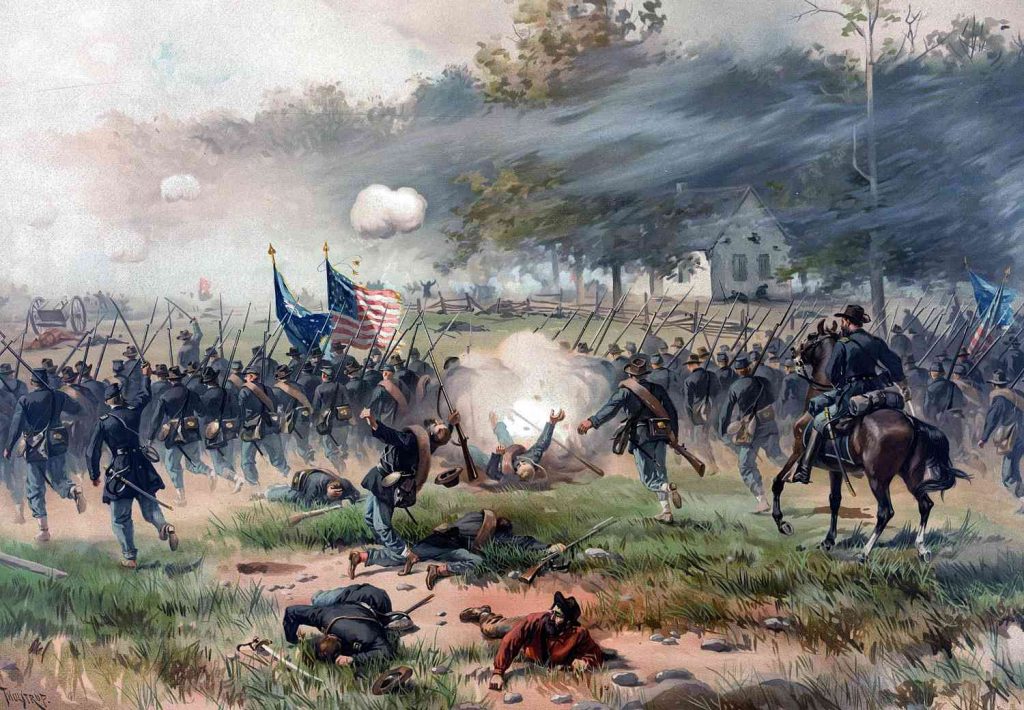
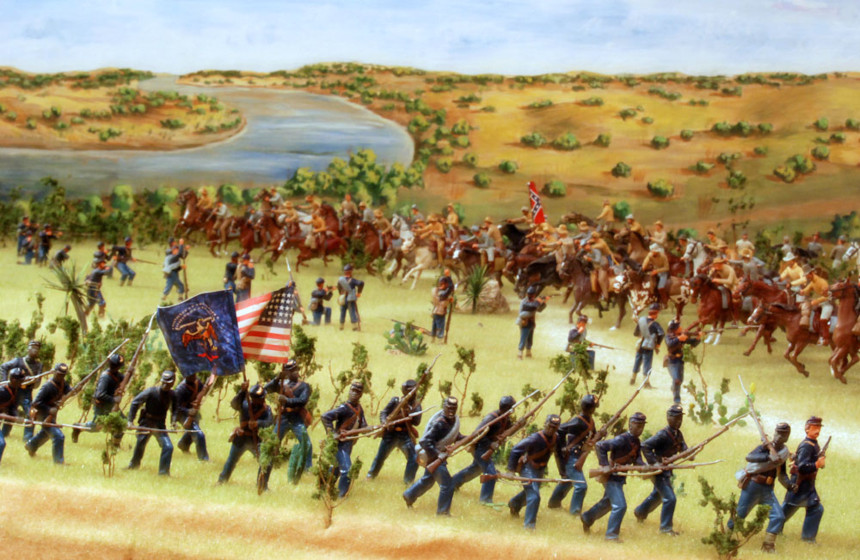
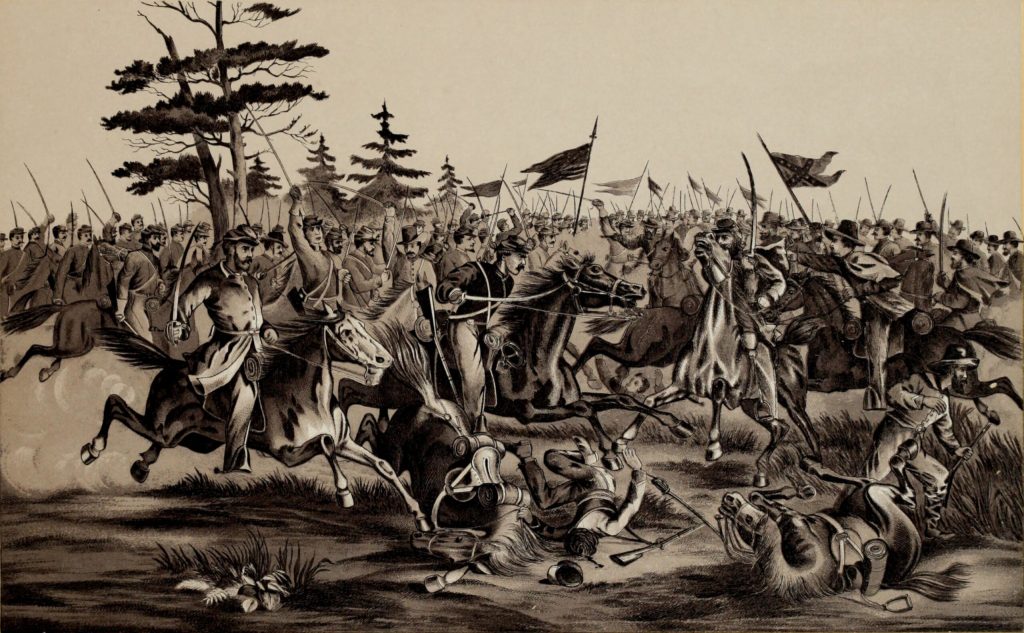
According to sources, the Battle of Appomattox Court House on April 9, 1865 is considered the major battle that effectively ended the American Civil War.
At Appomattox Court House, Confederate general Robert E. Lee surrendered his army to Union general Ulysses S. Grant, precipitating the capitulation of other Confederate forces and leading to the end of the bloodiest conflict in American history. Robert E. Lee Surrendering to US Grant at Appomattox 1865 and the final battle between the forces of General Ulysses Grant and General Robert E. Lee where Lee had no choice but to surrender after being surrounded. The surrender at Appomattox Court House marked the end of the Civil War. Robert E. Lee surrendered the last Confederate army to Ulysses S. Grant at Appomattox Courthouse on April 9, 1865. The Civil War ended April 9, 1865.
While the Battle of Palmito Ranch in Texas on May 12-13, 1865 is mentioned in and as the last battle actually fought during the Civil War, it occurred over a month after Lee’s surrender at Appomattox, which is cited as the decisive event that led to the conclusion of the four-year conflict.
So in summary, the Battle of Appomattox Court House, where Robert E. Lee surrendered the Army of Northern Virginia to Ulysses S. Grant on April 9, 1865, is identified across multiple sources as the major engagement that precipitated the end of the Civil War, even though some smaller battles were still fought briefly afterwards.
Details about the Battle of Appomattox Courthouse
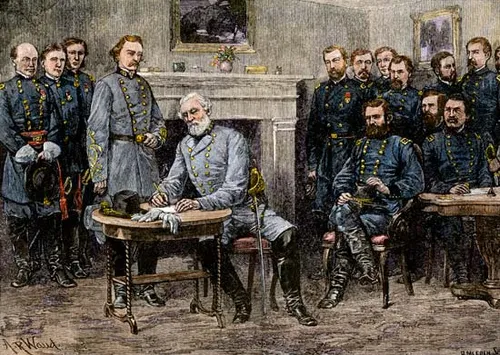
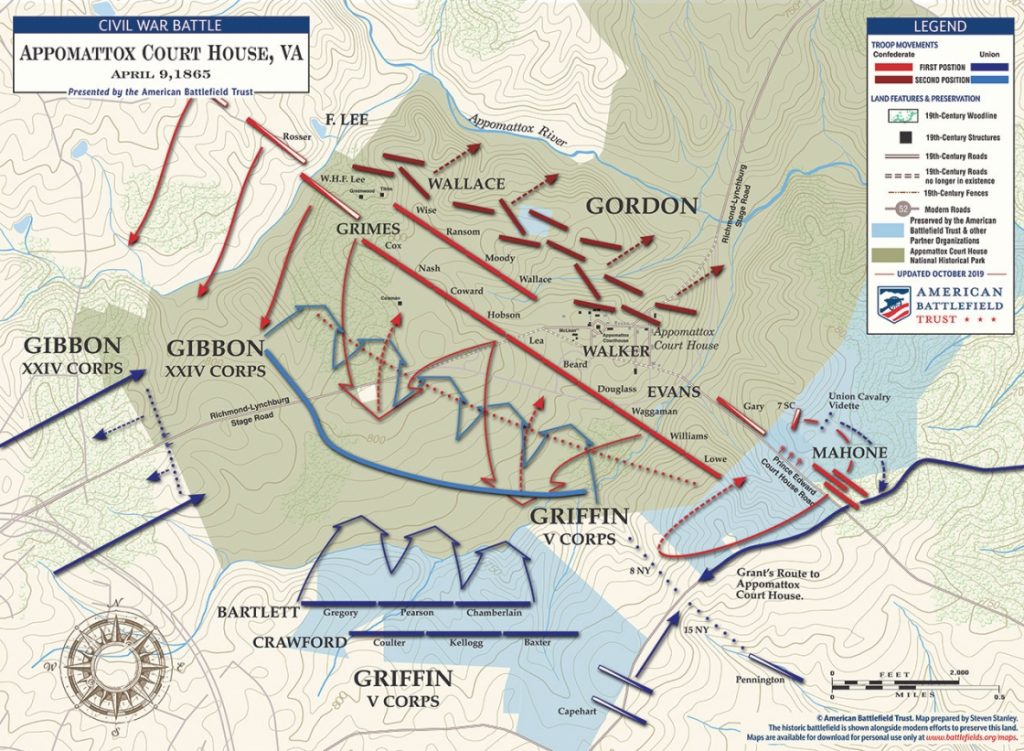
Here are the key details about the Battle of Appomattox Court House on April 9, 1865:
Overview:
- This was one of the last battles of the American Civil War, and the final engagement before Confederate General Robert E. Lee surrendered his Army of Northern Virginia to Union General Ulysses S. Grant.
- It took place in Appomattox County, Virginia after Lee’s retreat from Richmond and the Siege of Petersburg. Lee was attempting to join other Confederate forces in North Carolina.
Forces Involved:
- Union Forces: Army of the Potomac under Grant (63,285 men), Army of the Shenandoah under Philip Sheridan, Army of the James under Edward O.C. Ord.
- Confederate Forces: Army of Northern Virginia under Lee (26,000 men).
Events of the Battle:
- On April 8, Lee’s army made camp near Appomattox Court House, hoping to continue retreating.
- On April 9, Lee launched an attack to break through the Union cavalry forces under Sheridan that were blocking his path.
- Lee initially made progress against the Union cavalry, but Union infantry corps under Generals Meade and Ord soon arrived to reinforce Sheridan.
- Realizing he was now surrounded and outnumbered, Lee had no choice but to surrender when his final avenue of retreat was cut off.
Outcome:
- The battle itself saw light casualties – 164 for the Union, around 500 for the Confederates.
- But Lee was forced to surrender his Army of Northern Virginia, around 28,000 remaining troops, to Grant later that day at Appomattox Court House.
- This effectively ended the war in Virginia and triggered subsequent surrenders across the South over the next two months.
So in summary, at Appomattox Court House Lee made a final desperate attempt to break through Union forces and continue retreating west. But being surrounded and outnumbered, he was compelled to surrender his army to Grant, marking the beginning of the end of the Civil War after four years of fighting.
Role of Ulysses S. Grant in the Appomattox surrender
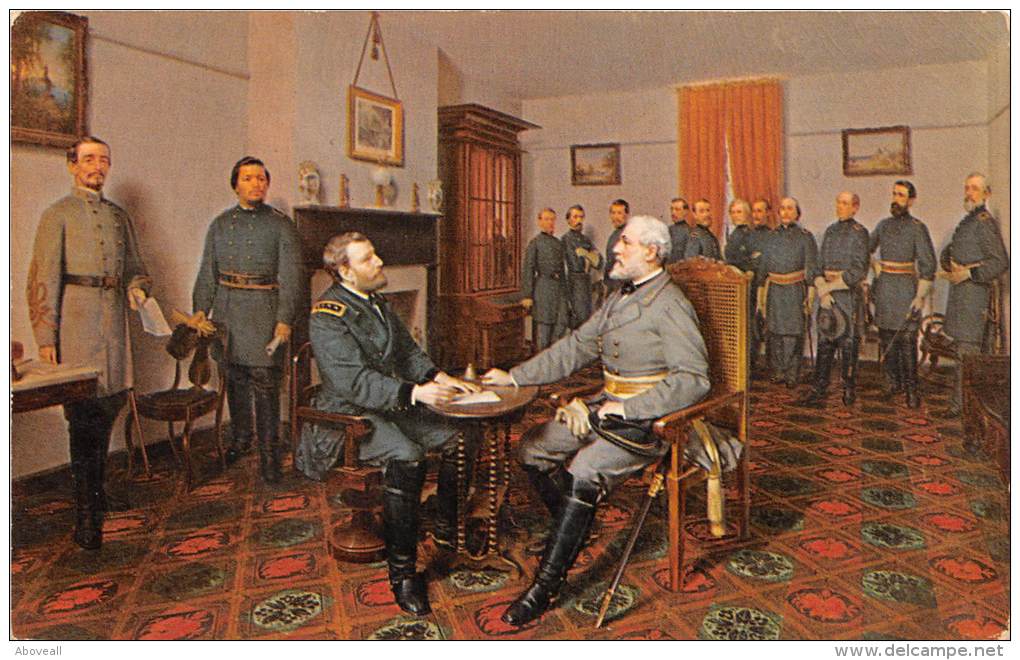
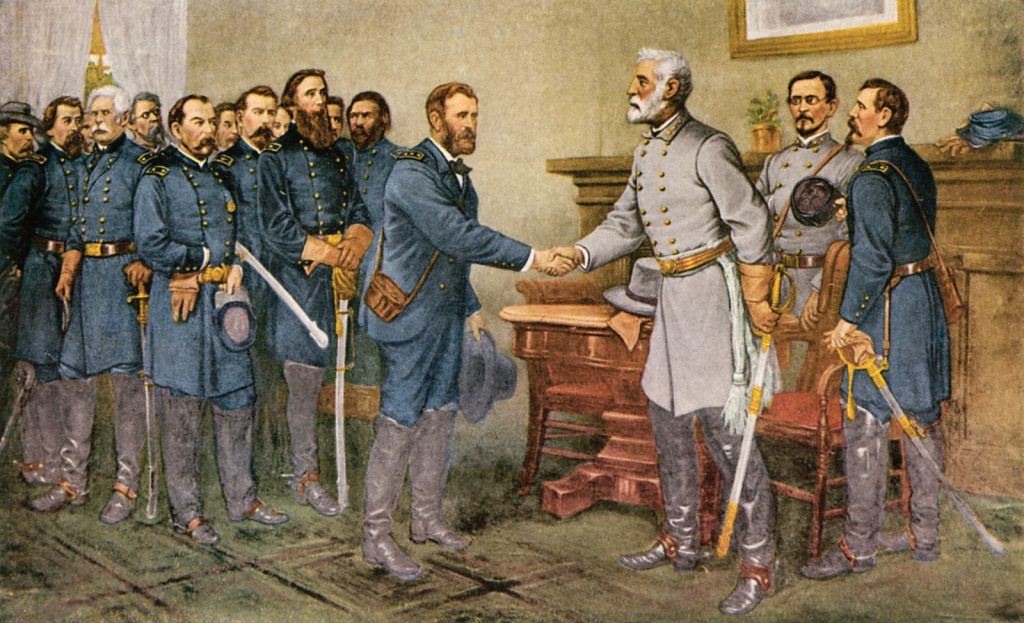
Ulysses S. Grant played a pivotal role in the surrender of Confederate forces under Robert E. Lee at Appomattox Court House on April 9, 1865, effectively ending the American Civil War.
Here are the key details about Grant’s role:
- As General-in-Chief of the Union armies, Grant led the relentless pursuit of Lee’s Army of Northern Virginia after the fall of Petersburg and Richmond.
- Grant’s forces, including the Army of the Potomac under George Meade and cavalry under Philip Sheridan, steadily cut off Lee’s retreat and supply lines as he attempted to join other Confederate forces in North Carolina.
- After the Battle of Sailor’s Creek on April 6th further depleted Lee’s forces, Grant sent him a letter demanding surrender when it became clear Lee was surrounded at Appomattox Court House.
- On April 9th, after an initial failed attempt by Lee to break through Union lines, Grant received Lee’s request to discuss surrender terms.
- Grant agreed to let Lee choose the location for the surrender meeting, which took place at the home of Wilmer McLean in Appomattox Court House.
- At the meeting, Grant penned very generous surrender terms in his “terse” letter to Lee, allowing officers to keep their sidearms, soldiers to keep horses and receive pardons.
- Grant’s magnanimity in victory is cited as helping prevent guerilla warfare from continuing and facilitating reconciliation after the war’s end.
- As President later, Grant brought members of his military staff to the White House and oversaw Reconstruction policies in the South, sometimes using military force.
So in summary, Grant’s brilliant military leadership cornered Lee’s army, his generosity and wisdom secured a full Confederate surrender on favorable terms at Appomattox, and his policies as President helped reintegrate the South, making him a central figure in both the military and political conclusion of the Civil War.
Robert E. Lee’s decision to surrender at Appomattox
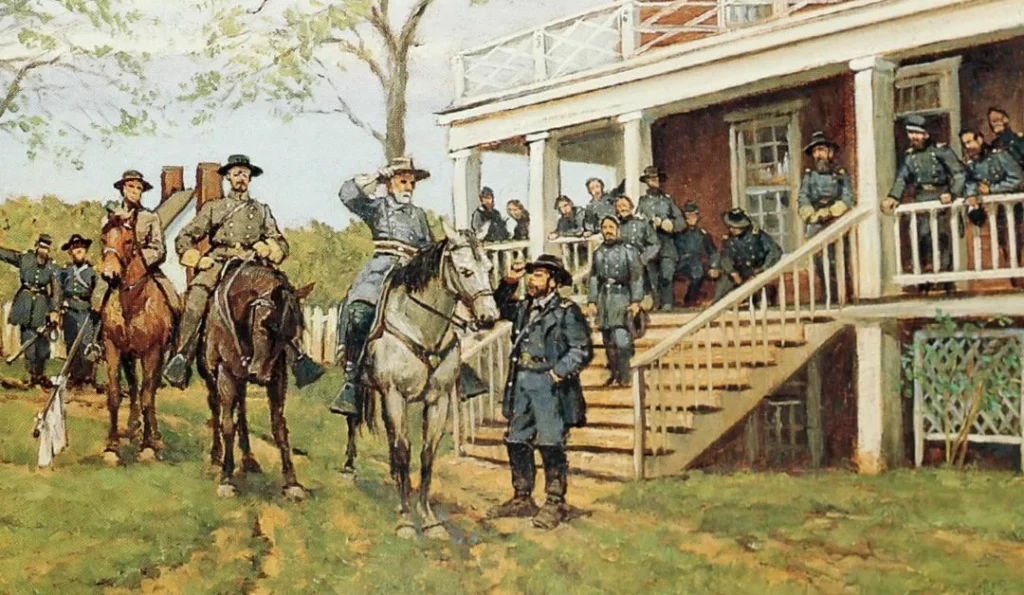
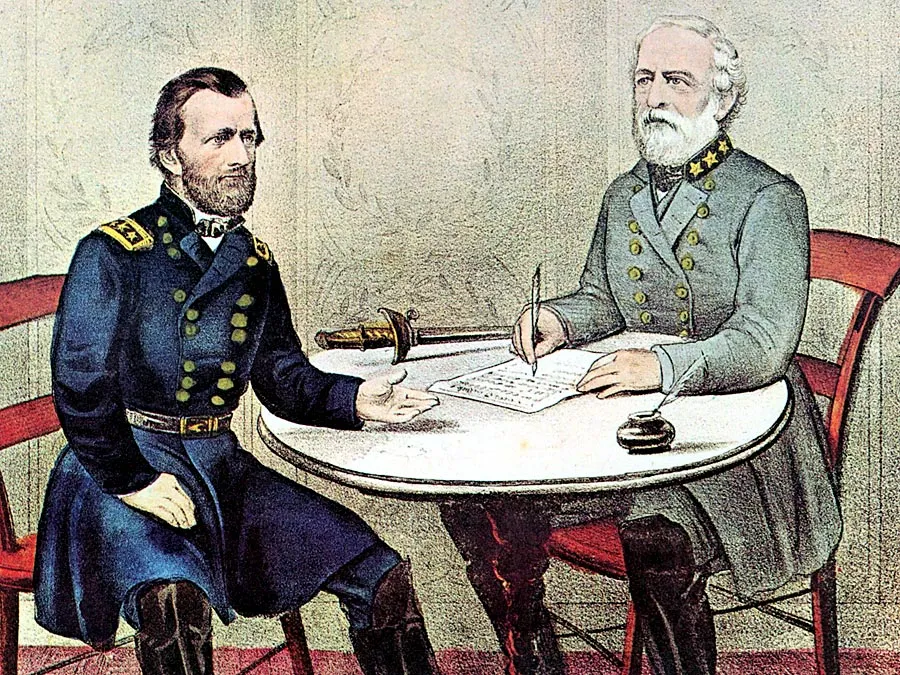
Robert E. Lee’s decision to surrender his Army of Northern Virginia to Ulysses S. Grant at Appomattox Court House on April 9, 1865 was driven by the realization that further resistance had become futile and would only lead to more needless bloodshed.
Here are the key factors that influenced Lee’s decision:
- His army was surrounded and outnumbered
After the fall of Petersburg and Richmond, Lee attempted to lead his army west to join other Confederate forces in North Carolina. However, Grant’s forces relentlessly pursued and cut off Lee’s escape routes, as described in and . By April 9th, Lee’s army was surrounded at Appomattox Court House by overwhelming Union forces under Grant and Sheridan. - His army was depleted and starving
In the weeks prior, Lee had lost over half his army to casualties, desertions and surrenders, as mentioned in . His troops were exhausted, starving and out of supplies after the grueling retreat, making them unable to continue fighting effectively against Grant’s superior numbers. - Further resistance was deemed hopeless
In his correspondence with Grant leading up to the surrender, as detailed in , Lee acknowledged the “hopelessness of further resistance” by his battered army. Grant urged him to end the “further effusion of blood” by surrendering. - Avoiding a final, bloody battle
By surrendering when surrounded at Appomattox, Lee was able to avoid what describes as a “final, bloody battle” that would have only led to more senseless casualties for both sides before an inevitable defeat. - Preventing guerrilla warfare
There were fears the Confederates might turn to guerrilla tactics after defeat. By formally surrendering, Lee rejected this path and helped prevent an endless insurgency, a key Union priority.
So while a bitter pill, Lee recognized that his army could not escape or achieve victory against Grant’s forces. His surrender decision at Appomattox was a pragmatic choice to prevent further futile bloodshed and destruction after four years of horrific civil war. The sources portray it as Lee’s best option once all hope of military success had been extinguished.